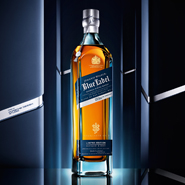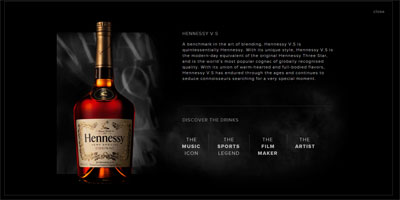
Hennessy, Johnnie Walker and Maker’s Mark are among the top 10 spirits brands that showed dominance in the digital realm this past year, according to a new report by L2 Think Tank.
Spirits brands that scored in the top 10 highly on the "Digital IQ Index: Spirits" included Absolut, Barcadi, Jim Beam, Johnnie Walker, Smirnoff, Hennessy, Maker's Mark, Sailor Jerry, Jack Daniel's and Grey Goose. The most digitally-savvy spirits brands linked to third-party ecommerce sites, leveraged their Web sites with engaging content and ran strong social media campaigns.
“Marketers in the spirits industry should recognize that millennials are the future of their brands and that they need to invest in digital accordingly,” said Ari Wolfe, research and advisory lead at L2 Think Tank, New York.
“While regulations prevent direct ecommerce and force age-gates on Web sites and social properties, digital investments are still a critical component of the marketing mix,” he said.
“Those brands that do not invest in digital miss out on the opportunity to engage with consumers and guide interested buyers to points of purchase.”
The Digital IQ Index: Spirits benchmarked the digital competence of 69 spirits brands on more than 675 data points across four dimensions: Web site, digital marketing, social media and mobile. Marketers were scored 20 percent on mobile, 30 percent on social media, 30 percent Web site and 20 percent digital marketing.
Marketers were given rankings of Genius, Gifted, Average, Challenged or Feeble.
Digital dominators
Spirits brands Johnnie Walker, Hennessy and Maker’s Mark all received scores that placed them in the Gifted category, while Absolut, Bacardi and Jim Beam received the Genius ranking.
Johnnie Walker ranked highly since it used email marketing, which is not a highly-used platform by spirits marketers.
The report found that 59 percent of spirits brands offer email signup, but half of those send a welcome email.
Also, Johnnie Walker furthered its visibility this past year by entering partnerships for special-edition bottles.
Johnnie Walker and Porsche Design Studio partnered to market a collection of products that included limited-edition bottles and made-to-order bars for the home to target affluent holiday gift-buyers (see story).
In addition, the brand produced a limited number of aged whiskey bottles to commemorate the British Queen’s 60th year on the throne in 2012. The special-edition whiskey was priced at $162,380 per bottle (see story).
Meanwhile, Hennessy was praised for its microsite at www.neverstopneversettle.com, its partnership with Spotify and its use of YouTube.
However, the brand’s microsite is two clicks away from its Web site, so it may be difficult for users to locate it, according to L2 Think Tank.
 Hennessy microsite
Out of the microsites that the study identified, 55 percent had no link on the parent brand’s main Web site. This suggests a lack of coordination and communication between divisions, Mr. Wolfe said.
Maker’s Mark was ranked highly due to its search engine visibility. The brand also made strides in social media and digital marketing.
For instance, Maker’s Mark played off of the 2012 U.S. presidential elections through a satirical politically-themed Cocktail Party campaign that promoted its brand image and products via social media, events, television and out-of-home ads (see story).
Further down in the brand rankings, Remy Martin was placed in the Average category for its social sharing options and cocktail suggestions on its Web site.
Digitally green
Approximately one-third of the brands ranked in this study fell into the Challenged category since digital marketing is still in the beginning stages in the spirits industry, according to L2 Think Tank.
Spirits brands such as Laphroaig, Courvoisier and Glenmoreangie landed in the Challenged category.
However, Laphroaig was praised for its “Friends of Laphroaig” loyalty program efforts that include user-generated content, rich media and bottle ID purchase tracking.
The digital world is slightly different for the spirits industry since there are regulations on selling spirits online.
Thirty-six percent of brands created an online retail locator and 16 percent of brands linked to third-party ecommerce sites to get around this problem.
Although some brands are making strides in digital marketing, overall digital marketing for spirits brands does not compare to other sectors, especially in certain areas such as social media.
“Despite the inherent social nature of spirits consumption, average community sizes on social media properties lag far behind other industries,” Mr. Wolfe said.
Final take
Erin Shea, editorial assistant on Luxury Daily, New York
Hennessy microsite
Out of the microsites that the study identified, 55 percent had no link on the parent brand’s main Web site. This suggests a lack of coordination and communication between divisions, Mr. Wolfe said.
Maker’s Mark was ranked highly due to its search engine visibility. The brand also made strides in social media and digital marketing.
For instance, Maker’s Mark played off of the 2012 U.S. presidential elections through a satirical politically-themed Cocktail Party campaign that promoted its brand image and products via social media, events, television and out-of-home ads (see story).
Further down in the brand rankings, Remy Martin was placed in the Average category for its social sharing options and cocktail suggestions on its Web site.
Digitally green
Approximately one-third of the brands ranked in this study fell into the Challenged category since digital marketing is still in the beginning stages in the spirits industry, according to L2 Think Tank.
Spirits brands such as Laphroaig, Courvoisier and Glenmoreangie landed in the Challenged category.
However, Laphroaig was praised for its “Friends of Laphroaig” loyalty program efforts that include user-generated content, rich media and bottle ID purchase tracking.
The digital world is slightly different for the spirits industry since there are regulations on selling spirits online.
Thirty-six percent of brands created an online retail locator and 16 percent of brands linked to third-party ecommerce sites to get around this problem.
Although some brands are making strides in digital marketing, overall digital marketing for spirits brands does not compare to other sectors, especially in certain areas such as social media.
“Despite the inherent social nature of spirits consumption, average community sizes on social media properties lag far behind other industries,” Mr. Wolfe said.
Final take
Erin Shea, editorial assistant on Luxury Daily, New York
